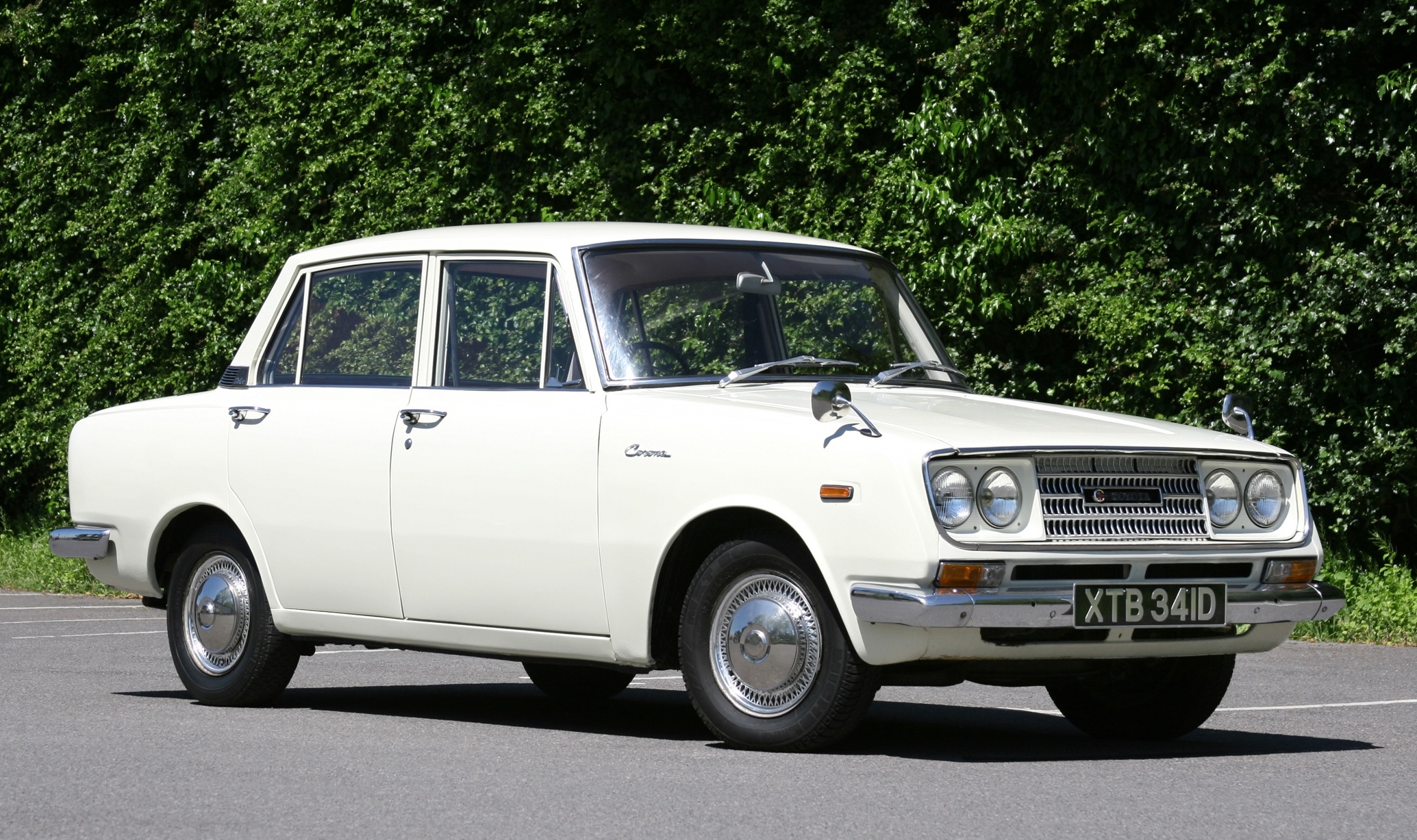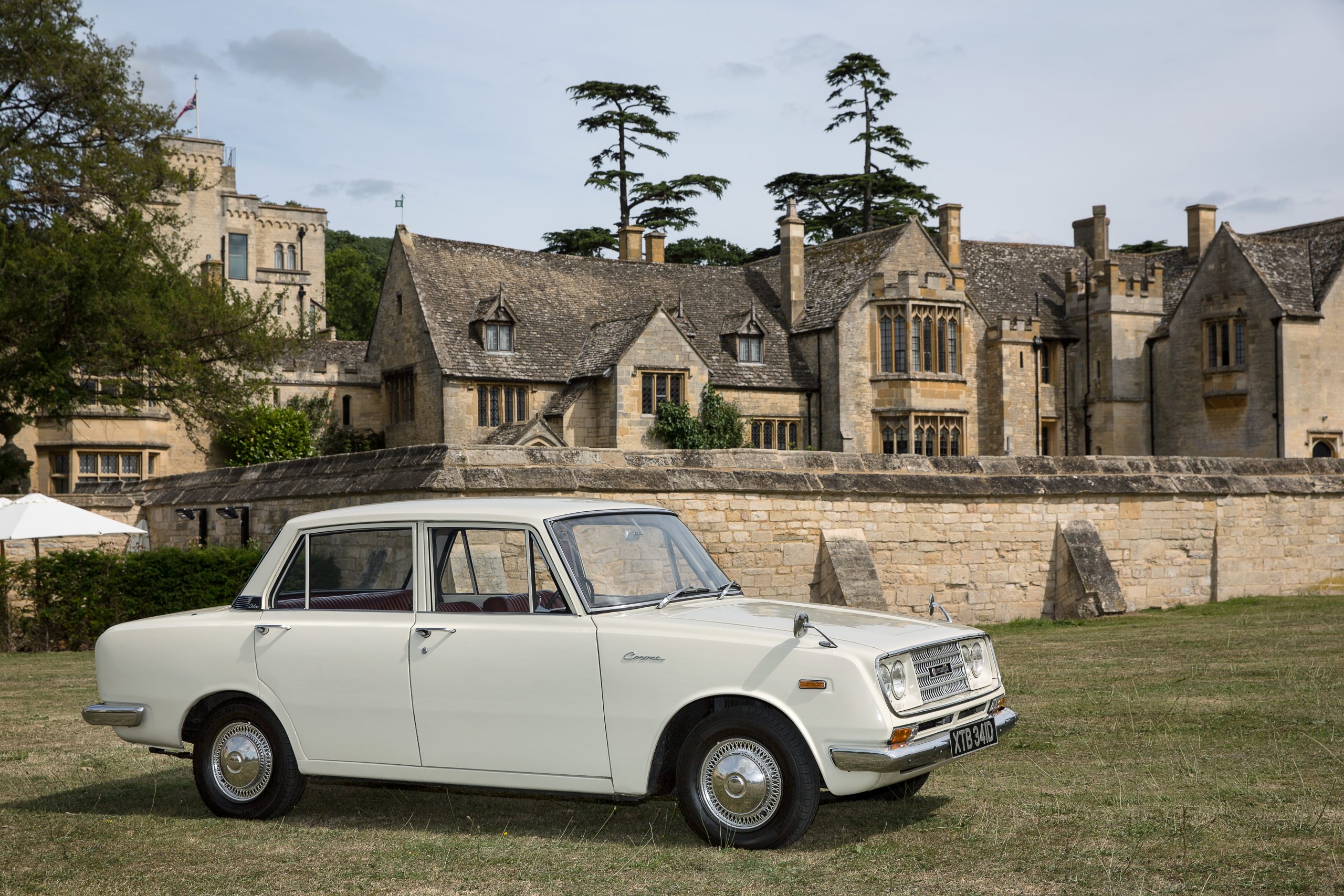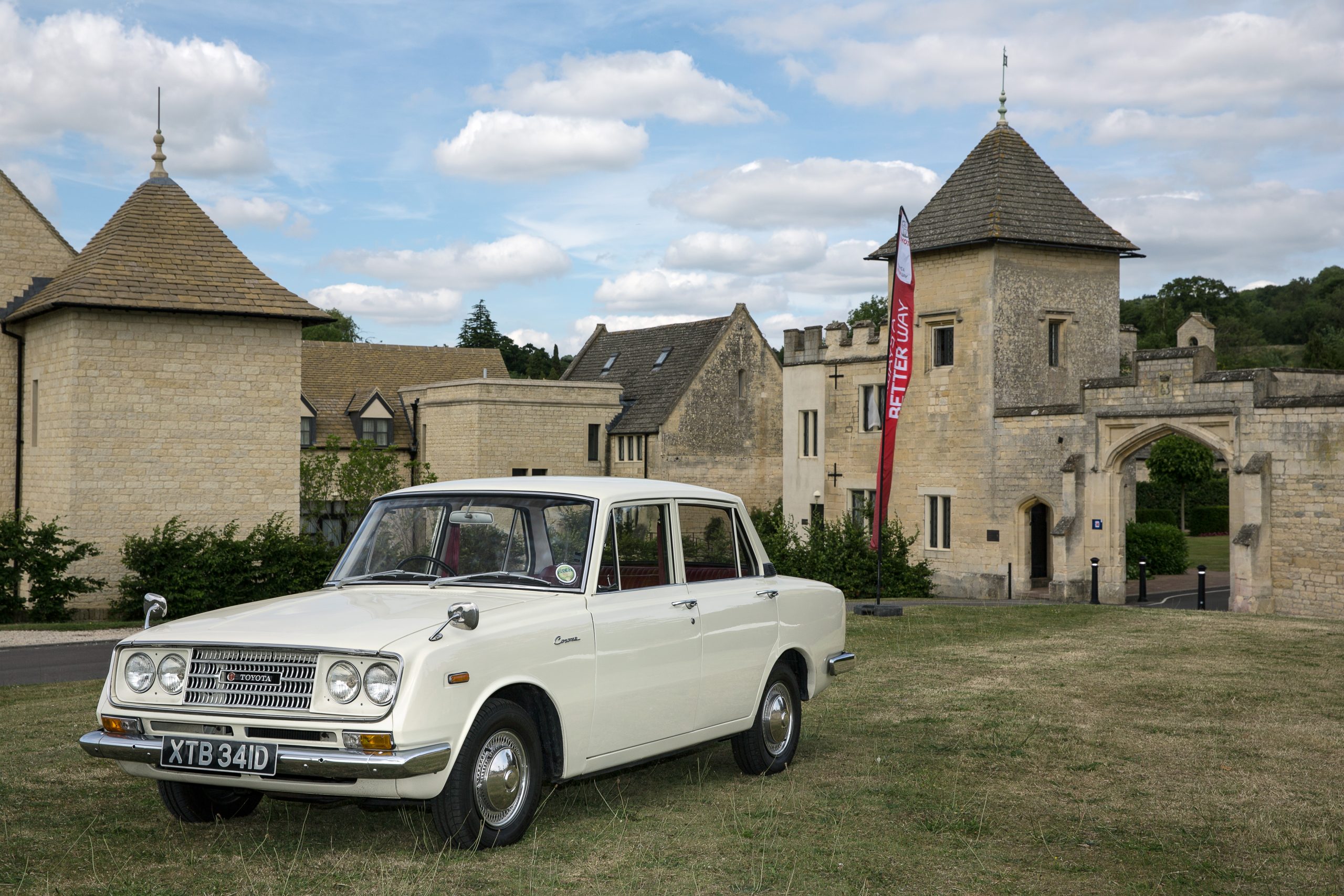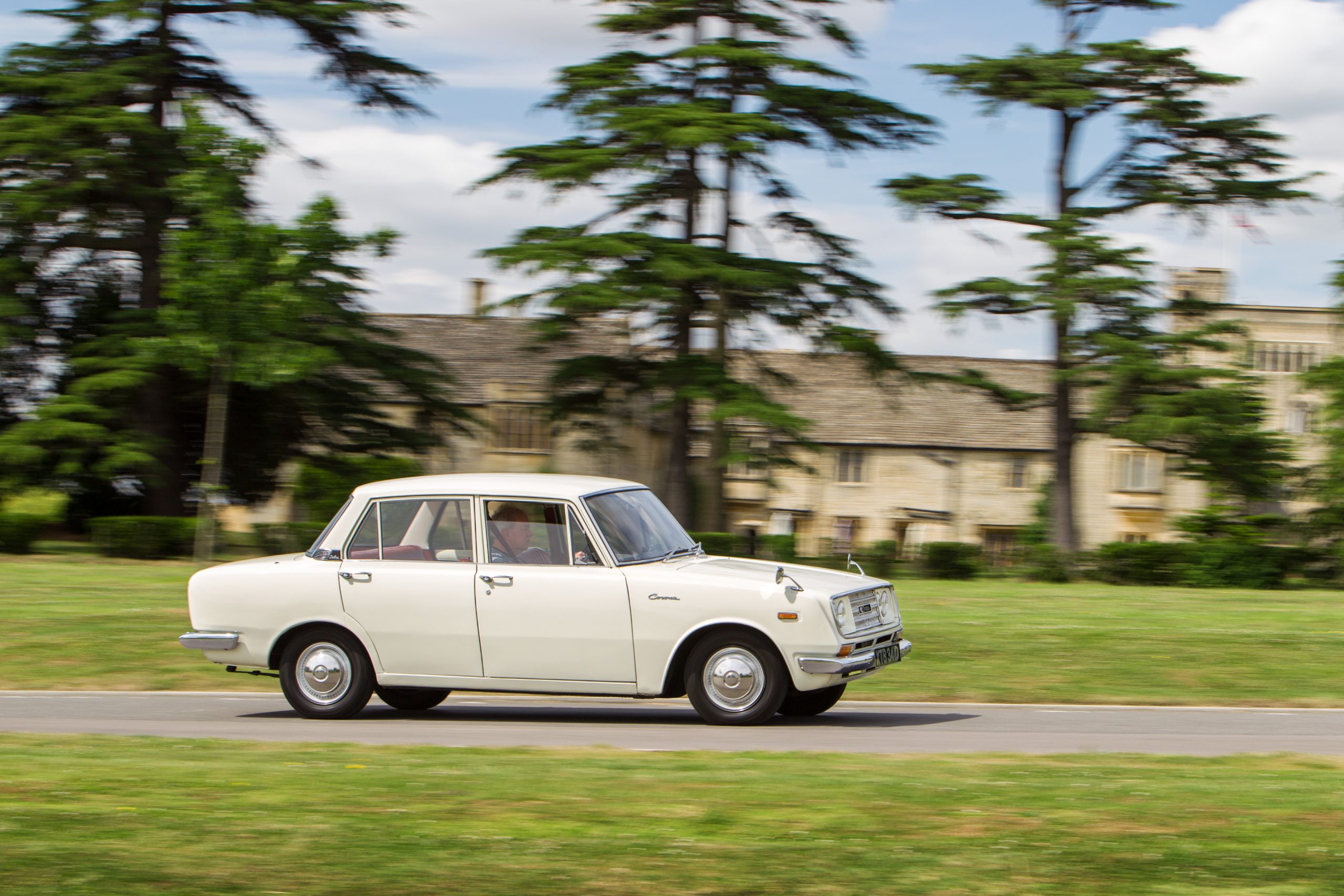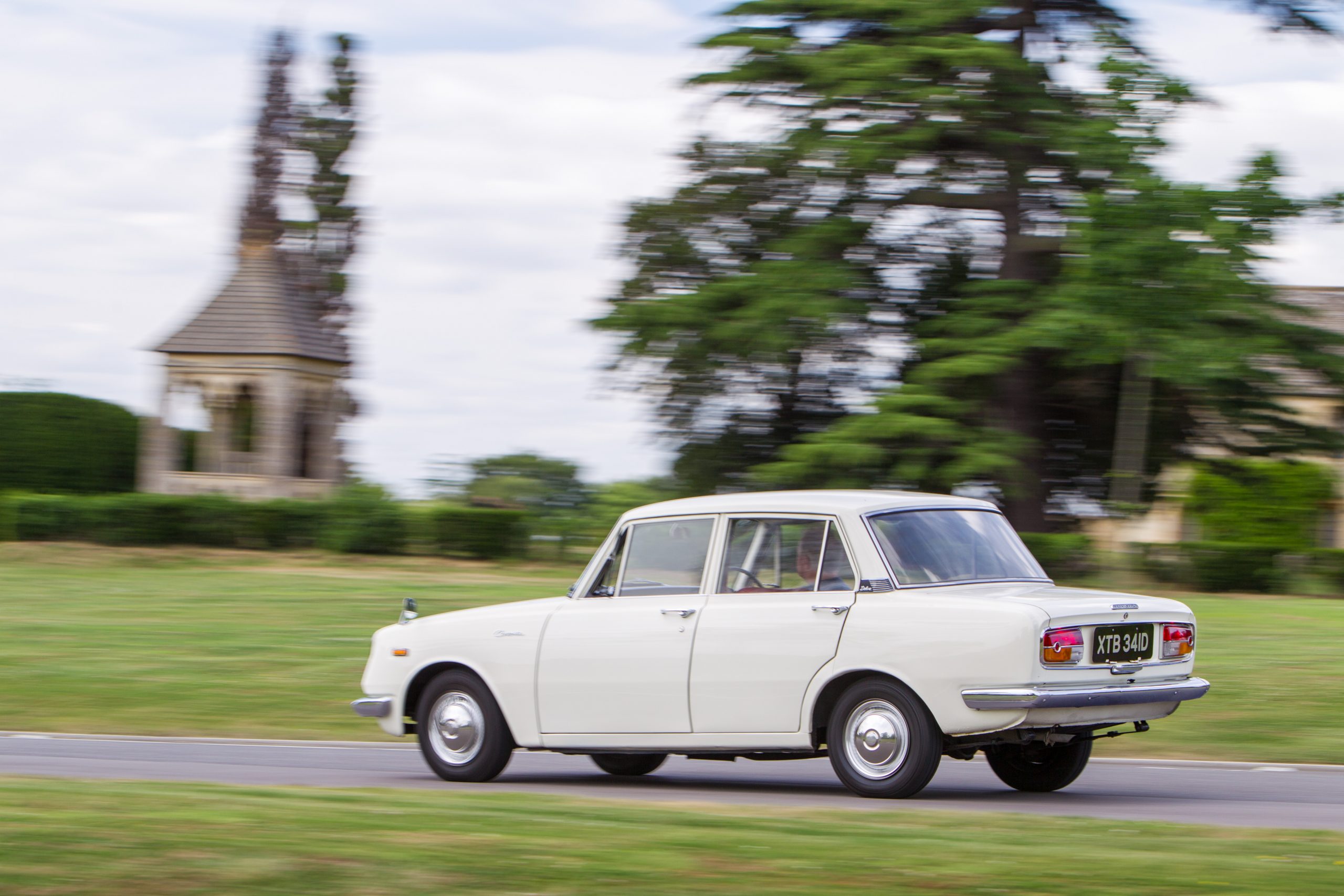Long lives, big anniversaries – and big numbers – by Dave Moss
(All photographs © Toyota).
Though just pre-dated by the original Land Cruiser, Toyota’s first post war passenger car was also the first to have been entirely designed and built in Japan when it appeared on its home market during 1955. Badged as the Toyopet Crown – named after the long established loom manufacturing company from which making cars was a 1937 offshoot, it was a large, very conventionally engineered saloon, with a list price then over twelve times the average annual Japanese salary.
Despite this it proved so popular that production couldn’t always match demand, a situation which convinced the company to begin construction of what was the first dedicated Asian passenger car plant – and the key to unlocking Toyota’s remarkable future growth. Subsequently named Motomachi, it was one of many building projects central to the regeneration of Japan after World War II ended, with the first construction phase completed in August 1959 .
Even before the Crown entered production, the company was exploring overseas possibilities for its new, rugged all-terrain vehicle, the Land Cruiser, with the first exports, to Saudi Arabia, beginning in 1955, expanding into neighbouring Yemen in 1956. These first successful steps into international markets provided motivation for Toyota to develop and rapidly refine a strategic approach to overseas expansion, leading to establishment of their first overseas assembly plant in Brazil during 1958. Within two years, local assembly of “knock down” (CKD) kits was being undertaken in places as far apart as Mexico, South Africa, and Australia, alongside steeply rising completed Japanese automobile exports – from 35,000 units – including 10,000 Toyotas – in 1961, to 90,000 units in 1963.
Meanwhile, Toyoda Crown production was moved to Motomachi towards the end of 1959, where monthly production of 2000 cars left capacity available to increase production of Toyota’s second all-new passenger car, and its first monocoque design, the Corona. Originally launched in July 1957, this was a small, unpretentious, four door, four seat, rear wheel drive saloon, initially powered by a 33 horsepower 1.0 litre petrol engine. It became a model case study in “kaizen” – broadly translated as “an unwavering policy of continuous improvement”, since widely adopted by Japanese automobile manufacturers. Applied as design and manufacturing policy to the Corona brought enduring home market success, with the car, and Motomachi, becoming central to the company’s determined 1960s export drive.
This naturally included Europe, and Danish car retailers Erla Auto Import were first to sign up – as Toyota distributor for Denmark, Sweden and Norway – where the first Crown models were sold in 1963. The official British launch saw four new, third generation Coronas on a Pride & Clarke stand at the 1965 London Motor Show – surprising perhaps as the company were then famous as Britain’s biggest motorcycle sales, service, parts and clothing retailer. However, pre-war the firm had sold Ford, Morris, and Opel cars, and Skoda in the early 1960s – until the Toyota concession was secured via their subsidiary Motor Imports Company Ltd. In 1967 this morphed into Toyota GB Ltd., from where a traceable lineage connects to Toyota PLC in Britain today.
In 1965, range-opening saloon and estate Coronas for the British market had 1.5 litre 74 horsepower engines, and a claimed mid-80 mph top speed, though the 1600S sports saloon and 2 door hardtop were slightly more powerful. Saloon prices started at £790 16s 11d (£790.84) – a hefty 10% and £80 above the soon-to-be-replaced 1500cc Ford Cortina Mk I – while the hardtop was listed at £1194 0s 3d (£1194.02). Prices reflected shipping costs from Japan, but included standard-fit luxuries British buyers hadn’t realised they were missing, including all-synchromesh gearboxes, reversing lights, and two-speed wipers with electric screenwash. A bonus was the Corona’s mechanical reliability, hardly the strongest point of some 1960s British cars.
In the US, there was a faltering start as the Toyota Tiara in 1961, but sales improved significantly after 1964 with reintroduction as the Corona, with optional automatic transmission. The range was then expanded, to eventually include five door “liftback” versions, estate cars, three different coupé and two-door alternatives, even van and pick-up derivatives, topped off, from 1966, by a 110 hp 1600GT model.
The Corona’s unpretentious, compact design, combined with easy driveability and ultra reliable engineering, proved an instant hit in Europe, where by the late 1960s it was amongst the most popular of several competing Japanese cars then available, despite far from all of the many available variants being imported. Nonetheless Corona export sales increased from under 10,000 units in 1964 to over 80,000 in 1967 – when Australia became Toyota’s biggest export market, displacing Volkswagen as that country’s top imported marque. The following year, the Corona was best seller in it’s home market, and during 1970, European assembly began – in partnership with Salvador Caetano of Portugal, where those first Caetano-assembled cars were sold, part of a concerted sales drive across Europe and beyond. Ultimately, the model line found homes in 140 countries worldwide – while Caetano is still building Toyota vehicles today.
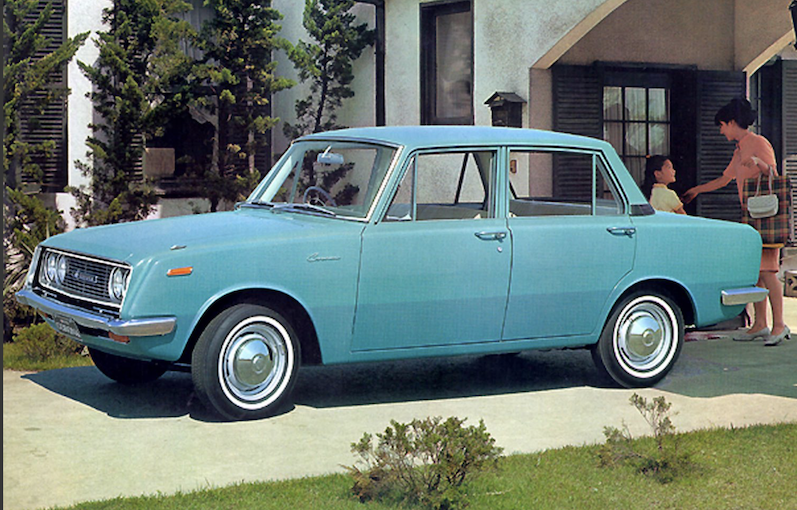
A comprehensive, larger bodied redesign spun off from the original car appeared as the Corona “Mark II” in 1968, offering 1.6, 1.8 and 2.0 litre engines with wider trim and model choices, noticeably lifting sales at home and abroad. The original car continued, and though the “Mark II” lost its Corona tag after 1972, its undiminished popularity despite growing international competition is well demonstrated by narrowing gaps between production milestones. It took 11 years from the Corona’s 1957 launch for production to pass the 1 million mark in 1968, but only 5 years to pass 2 million in 1973, and just 3 years to hit 3 million in 1976.
Withdrawal from the US market, a change to front wheel drive, and more competition from Honda’s first Accord model delayed the 4 million total until 1980, but in late February 1986, 28 years after launch, Toyota announced that cumulative Corona passenger car production had passed 5 million units. Almost as an afterthought, it added that, if commercial derivatives were included, production had exceeded 5 million four years earlier, in November 1981 – the year the last of 10,863 Coronas sold here helped to secure Toyota’s foothold in Britain…
In 1990 over 213,000 examples of the “Mark II” were built by the Motomachi plant alone, part of an all-time record annual production peak of 445,000 cars. Though declining afterwards, over half a million more examples were made – mostly sold in the far east – before all Corona production finally ceased in 2001. It bequeathed a significant legacy, with design elements incorporated into the original Cressida, the Japanese-built Carina, and even its later relative, the Carina E – first product from Toyota’s then new UK plant at Burnaston, near Derby.
Motomachi played a key role in Toyota’s 20th century development into a very high volume, world class car company. The Crown has been continuously available on its home market now for 70 years and 16 generations, and the Corona started a Toyota trend surely summarised as offering the right car at the right time, and in the right places – worldwide. Since the Corona, other high volume production records have been set, an example being the RAV 4, which entered production at Motomachi in 1994, and reached 10 million sales in February 2020, over 20% of them in Europe – the “right time” for this car being the start of the SUV boom.
But even ten million RAV 4 sales aren’t Toyota’s biggest achievement, for it also claims production of the world’s best-ever selling car: the current generation Corolla, some versions of which are built in the UK, is now remorselessly pushing this model line’s cumulative production total since 1966 towards 19 million units…
——————
References and further information
Official story of the Motomachi plant in Japan
https://toyotatimes.jp/en/series/inheritance_and_evolution/003.html
Official story of Toyota in Europe
https://www.toyota-europe.com/about-us/toyota-in-europe/our-journey-in-europe
How many Toyota Coronas remain in the UK?
https://www.howmanyleft.co.uk/vehicle/toyota_corona
History of Toyota Corona in US
https://www.toyotaoforlando.com/research/a-history-of-the-toyota-corona.html
Toyota Corona production reaches 5 million units
https://global.toyota/en/detail/7779085
Official 75 year history of Toyota
Official history of early versions of Corona
Wikipedia’s story of the global Corona model line
https://en.wikipedia.org/wiki/Toyota_Corona
Story of a rare surviving Corona pick-up
https://mag.toyota.co.uk/1967-toyota-corona-pick-up/
More information on Toyota’s third generation Corona
Sales launch in Japan
In August 1964, the first new third generation Corona models rolled out of the Motomachi Plant for the sales launch across Japan. The car proved to be incredibly popular, with over 200,000 people attending unveilings and signing up for test drives. That year, the Meishin Expressway – the country’s first such road, linking Nagoya and Osaka – was opened, and Toyota used the occasion for a fuel-stop-only 100,000 kilometre (62,140 miles) drive backwards and forwards along the road, in a novel, high profile promotion for the new car. Three Coronas started the journey on September 14, 1964, and all reached their 100,000 kilometre goal on the 11th of November, 58 days after starting. The achievement convincingly promoted an image of the car’s high performance (by the standards of the day) and very high reliability, helping to open Japan’s motorway era.
Corona success… and sales overtake those of Nissan’s Bluebird
Toyota’s third generation Corona, which enjoyed strong sales growth in Japan following its August 1964 launch, drew level with Nissan’s Bluebird by December, selling 8,400 vehicles during the month. In January 1965 the Corona moved ahead of the Bluebird, and captured Japan’s top sales spot. Toyota put the success in part down to the car having been fully redesigned, but also reckoned that much of it resulted from newly introduced and innovative Total Quality Control (TQC) initiatives. These involved a company-wide project team monitoring and refining the car’s build schedule from development through to production, with all the plants involved holding process planning meetings to ensure quality assurance right across the production process. It must have worked: the new Corona went on to be Japan’s top selling car for 33 months from April 1965 to December 1967… and TQC became a foundation stone for all future Toyota vehicle production.
Third generation Corona was the first version to be sold in the United States
First and second generations of the Corona were not sold in the U.S.A. so their ‘first generation’ versions were in fact third generation models from the start of Japanese production!
